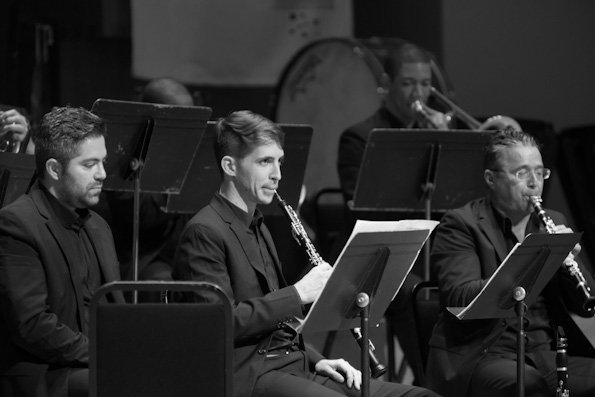
A life spent with music as the predominant driving force is more enriching in comparison with what almost any other profession can provide. This is one of the main reasons why this incredible art form should be a birth right: not an option or a second choice. It encapsulates emotional wellbeing which can be accumulated throughout life’s journey. Listen especially to those musicians who have reached the apex of their creative capacities as instrumentalists or singers, and hear how the composer’s voice speak through them. There is hardly anything in life that can confirm the creator’s greatness than the musician who has studied, analysed the composition, worked through and lived with the material throughout a lifetime.
While writing this I hear instrumental sounds coming from the different halls and foyers of the Stellenbosch Conservatoire. Scattered sectional rehearsals and the collective sounds of a full orchestra compete separately for a space to rehearse in. Difficult sections are repeated and sounds are blended to a level which can lead to a higher form where details like the expression, colouring, dynamic nuances and rhythmic flow of the piece can obtain the type of individual character the composer might have envisioned through the conductor’s recreative talents and to communicate those essentials to the orchestra.
This experience recalls the sound during the early days of the SA National Youth Orchestra in the mid-1960s when a new era of orchestral training aimed at youngsters dawned in South Africa. This has been accumulated on a more inclusive scale in the new South Africa since 1994 and the annual Stellenbosch International Chamber Music Festival (SICMF) is a prominent role player in this process.
My baptism of fire regarding the SICMF was last night’s Faculty Concert 3 in the Endler. With two SA premieres on the programme, anybody with some adventure in his/her veins should have jubilated. The opening piece, Octandre by French-born Edgard Varèse (1883-1965). It is composed for an octet of four winds, three brass players and double bass. One of the composer’s most prominent traits is reflected in this, one of his more smaller-scaled works: his ability to communicate forcefully and present his ideas in a very clear way. It is quite obvious that the technical demands are daunting and that many ensembles would prefer the comforting presence of a conductor. Pierre Boulez, amongst others, was a champion of Varèse and even insisted to conduct his “miniature” pieces.
In this performance the oboist James Austin Smith, a New Yorker, took a leading role and his instrument was, as it were, the conductor’s stick! Fascinating about the work is that Varèse has a very special facility to suggest older forms in music within a forward looking and sounding context. Especially the writing for the three brass instruments, French horn, trumpet and trombone, reminded one in some section of old German Turm-musik. Ensemble was excellent throughout, with the continuous changes in rhythmic pulse, clearly delineated.
Mozart’s Serenade in E flat major, K.3375 for Wind Octet was given a naturally flowing dynamic and flexible performance which had space to breathe in the glorious phrasing which came forward and provided the work with an added aristocratic aura. Ferdinand Steiner, principal clarinet of the Mozarteum Orchestra in Salzburg, led the performance with a natural feeling for the music, but continuously enriched the music’s stature by avoiding any dogmatic thoughts regarding Classicism. The ensemble, made up of international musicians in tandem with South Africans, treated us with the full maturity of Mozart’s love for wind instruments. When Steiner, in a surprise cadenza, added a phrase from the Queen of the Night’s aria from Die Zauberflöte, the effect of this ornamentation sounded so spontaneous that there would be no doubt that the composer would have agreed to it!
More magic of a totally different kind followed with the SA première of the Latvian composer Péteris Vasks’ (1946-) Distant Light (Concerto for Violin and String Orchestra), with Daniel Rowland as the soloist with an ensemble consisting of faculty members and students.
Rowland has an inherent talent to clarify scores to a level where they communicate with a higher level of clarity, without ever losing sight of the underlying subtext which initially inspired to composer. With Vasks the close listener is transported into timeless elegiac soundscapes with a kind of magic “undergrowth” from which themes that are elevated to more concrete structural pointers within the work develop. This kind of continuation which requires enormous concentration, was strongly evident in the soloist’s involvement and the ever changing tonal and wide emotional spectrum of his playing.
In the three challenging cadenzas Rowland connected us with various historically connected stylistic elements that are interwoven into them and which makes of this work more than just a kind of contemporary classic. Xandi van Dijk conducted the work with the kind of precision, but also with enthusiasm and passion (like in the short waltz sequence) that was far more than admirable.
Paul Boekkooi